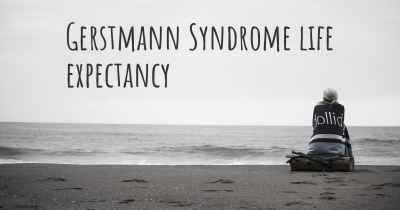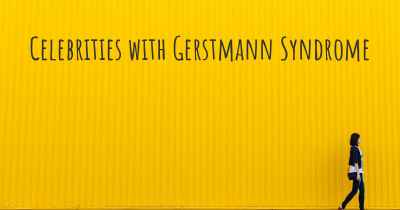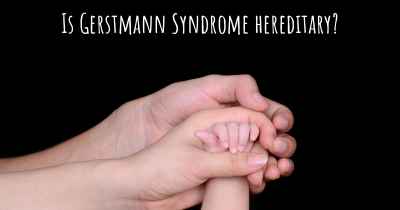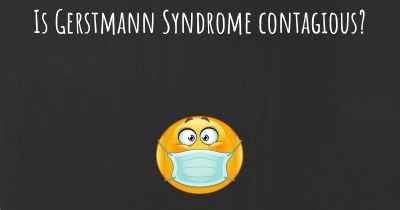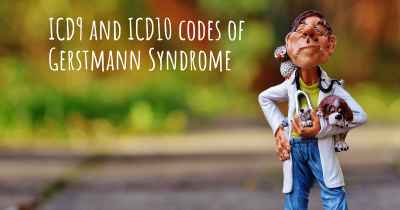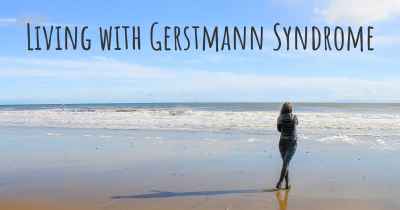What is the history of Gerstmann Syndrome?
When was Gerstmann Syndrome discovered? What is the story of this discovery? Was it coincidence or not?

The History of Gerstmann Syndrome
Gerstmann Syndrome is a rare neurological disorder characterized by a constellation of symptoms that include finger agnosia, dysgraphia, dyscalculia, and left-right confusion. It was first described by Austrian neurologist Josef Gerstmann in 1924. Gerstmann Syndrome is typically caused by damage to the dominant hemisphere of the brain, particularly the parietal lobe.
Discovery and Early Observations
In the early 20th century, Josef Gerstmann, a prominent neurologist, encountered several patients who exhibited a unique combination of symptoms. He meticulously documented their clinical presentations and published his findings in a seminal paper titled "Syndrome of Finger Agnosia, Dysgraphia, and Acalculia: A Localized Disorder in Left Parietal Lesions" in 1924.
Gerstmann described four main symptoms that consistently appeared in his patients:
- Finger Agnosia: Patients had difficulty identifying and distinguishing their fingers.
- Dysgraphia: They experienced significant difficulties in writing, including spelling errors, poor handwriting, and an inability to write coherently.
- Dyscalculia: Patients struggled with basic arithmetic operations, such as addition, subtraction, multiplication, and division.
- Left-Right Confusion: They had difficulty distinguishing between left and right.
Controversies and Further Research
Following Gerstmann's initial observations, there was considerable debate among neurologists regarding the validity and specificity of the syndrome. Some argued that the symptoms were too diverse to be considered a distinct syndrome, while others believed they were merely manifestations of other neurological conditions.
It wasn't until the 1960s that further research solidified the existence of Gerstmann Syndrome. Neuroimaging techniques, such as computed tomography (CT) and later magnetic resonance imaging (MRI), allowed for the identification of brain lesions in patients with the syndrome. These studies consistently revealed damage to the left parietal lobe, providing evidence for a localized disorder.
Underlying Causes and Brain Localization
Gerstmann Syndrome is most commonly associated with acquired brain lesions, such as strokes or tumors, affecting the dominant hemisphere. The dominant hemisphere is typically the left hemisphere in right-handed individuals and the right hemisphere in left-handed individuals.
Research has shown that the parietal lobe, particularly the angular gyrus, plays a crucial role in the manifestation of Gerstmann Syndrome. Damage to this region disrupts the integration of sensory information and impairs various cognitive functions, leading to the characteristic symptoms.
Associated Conditions and Differential Diagnosis
Gerstmann Syndrome is often comorbid with other neurological conditions, such as aphasia, apraxia, and alexia. Aphasia refers to difficulties in language production and comprehension, while apraxia is the inability to perform purposeful movements. Alexia, on the other hand, is the loss of the ability to read.
It is important to differentiate Gerstmann Syndrome from similar conditions that may present with overlapping symptoms. For instance, agraphia, which refers to the inability to write, can be mistaken for dysgraphia. Similarly, acalculia, the inability to perform mathematical calculations, may resemble dyscalculia. Careful clinical evaluation and neuroimaging are crucial for an accurate diagnosis.
Treatment and Management
As Gerstmann Syndrome is primarily caused by underlying brain lesions, treatment primarily focuses on addressing the underlying cause. This may involve surgical intervention, radiation therapy, or pharmacological management, depending on the specific condition causing the syndrome.
Additionally, rehabilitation programs can help individuals with Gerstmann Syndrome cope with their symptoms and regain functional abilities. Occupational therapy, speech therapy, and cognitive training are often employed to improve writing, calculation, and other affected skills.
Conclusion
Gerstmann Syndrome, first described by Josef Gerstmann in 1924, is a rare neurological disorder characterized by finger agnosia, dysgraphia, dyscalculia, and left-right confusion. Despite initial controversies, subsequent research has confirmed the existence of the syndrome and identified the left parietal lobe as the primary site of damage. Accurate diagnosis and appropriate management are essential for individuals with Gerstmann Syndrome to optimize their functional abilities and quality of life.
